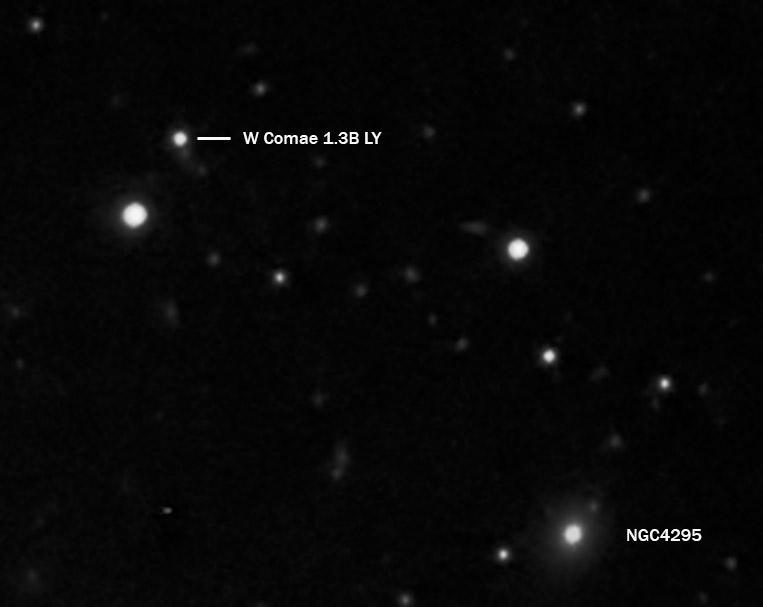A blazar – "blazing quasi-stellar object" – is a compact quasar (quasar: quasi-stellar object – a very energetic galaxy with an active galactic nucleus) presumably associated with a supermassive black hole at its center.
An active galactic nucleus is a small region at the center of such a galaxy that produces relativistic "jets" (relativistic: traveling at a speed approaching the speed of light). These jets are believed to originate at the supermassive black hole in the center of the galaxy. Infalling matter from the accretion disk around the black hole is diverted to the black hole's axes and ejected at speeds reaching 99% the speed of light.
When this jet is aimed at earth, we are looking "down its throat," and see it as a bright star-like point, sometimes surrounded by the faint nebulosity of the galaxy's disk.
Blazar W Comae Berenices (RA 12h 21m 38s, Dec +28° 14m 0s) is about 1.3 billion light years distant – about 10% the size of the observed universe. At this distance, the galaxy's disk is not apparent.
Notice the many faint galaxies in this image, which is only about 8 arc-minutes wide. They are closer to us than the blazar.

| Exposure |
|
||
| Processing |
Image calibration, registration, sigma-reject, mean-combine in CCDStack Levels, curves, highpass filter in Photoshop CS2 |
||
| Date and Location |
April 1, 2010
Montpelier, Virginia, USA |
||
|
Equipment |
TMB-130SS APO refractor at f/7 on an Astro-Physics 1200 German equatorial mount SBIG ST-8XM camera SBIG CFW-10 filter wheel with Astrodon filters Guide scope: 60mm f/5 refractor and ST-402 camera Imaging and autoguiding with MaxIm DL 4.62 |
Updated May 23, 2023